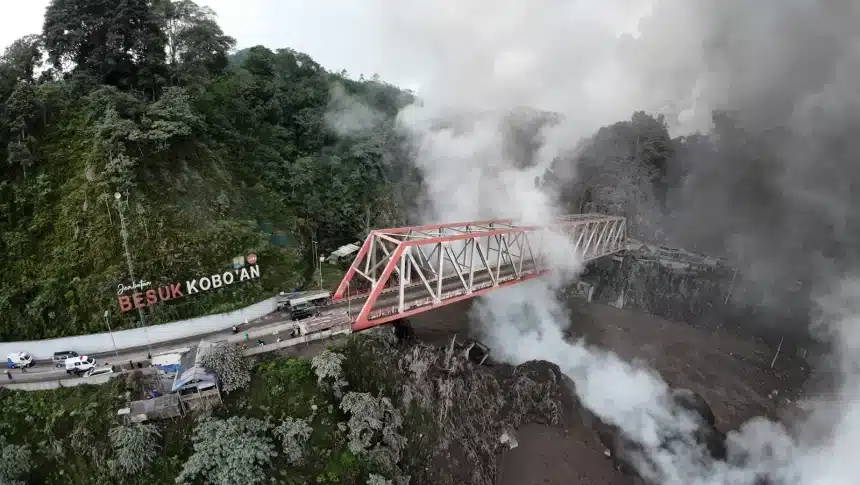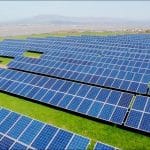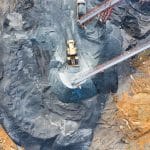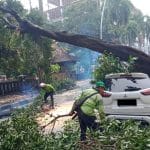Liga Asuransi –The Mount Semeru eruption in November 2025 has reached Level IV (Alert) status according to the Geological Agency, following a drastic increase in volcanic activity and the potential danger of volcanic ash and pyroclastic flows. The impact is palpable: hundreds of residents in Lumajang have been evacuated, while thick ash blankets villages within the danger zone.
Beyond the physical damage caused by natural disasters, eruptions like these also trigger a surge in insurance risks that can be significant—especially for companies and individuals with certain policies. Certain types of insurance may face significant claims pressure, ranging from property damage and business interruption to logistical losses and third-party liability.
This article will reveal the types of insurance most vulnerable to the impact of the Semeru eruption, explain how the risk of claims can increase, and provide important insights for policyholders and brokers to take appropriate mitigation steps.
For your business at risk of natural disasters, working with L&G Insurance Broker can be a crucial protection strategy. We’ll help you review your policy, evaluate your risk exposure, and thoroughly prepare for disaster claims scenarios so you’re not caught off guard when disaster strikes.
The Riskiest Types of Insurance When Mount Semeru Erupts in November 2025
A major eruption like Semeru in November 2025 triggered diversions that have a direct impact on the world of insurance. The following are the type of insurance that is most affected and has the potential to experience a surge in claims:
1. Property All Risks (PAR) / Industrial All Risks (IAR)
This type of insurance covers physical damage to buildings, machinery, equipment, and inventory. The Semeru eruption poses significant threats, including:
- Damage caused by volcanic ash that buried roofs and damaged building structures.
- Vibrations and ejections of material can damage facilities within a radius of several kilometers.
- Dust contamination of industrial machinery and electronics—damage that is very expensive to repair.
- Potential for secondary fires due to the interaction of heat and combustible materials.
The Lumajang, Probolinggo, and Malang areas were recorded as the areas most at risk of being affected by thick ash, resulting in many factories and warehouses having to stop operating.
2. Business Interruption (BI)
BI always works hand in hand with PAR. When buildings, machinery, or supply chains are impacted, companies will experience:
- Shutdown operational due to ash cleaning.
- Power outages and road access blocked by volcanic material.
- Distribution is hampered, especially from Malang–Lumajang–Jember.
- Decline in production and income.
BI is one of the largest types of claims when a disaster such as Semeru occurs.
3. Marine Cargo Insurance (Logistics Shipping)
The Semeru eruption had a direct impact on transportation routes:
- Land routes were closed due to thick ash, especially the Lumajang–Malang route.
- Rerouting increases the risk of delays.
- Damage to goods during transit due to volcanic ash entering the container or vehicle bed.
- Risk of accidents on the road due to minimal visibility.
Cargo is a type of insurance that is often overlooked but is the one that most often experiences claims when natural disasters strike.
4. Heavy Equipment Insurance (Heavy Equipment)
A lot of heavy equipment operates in the Semeru volcano-prone area, particularly for sand mining and infrastructure projects. Volcanic ash can cause:
- Dust entering the engine can cause permanent damage.
- Overheating of the cooling system.
- Loss of hydraulic pressure.
- The glass surface and sensor become non-functional.
Heavy equipment damage from ash often results in large claims, especially for units such as excavators, loaders, and dump trucks.
5. Motor Vehicle Insurance
Thousands of vehicles were affected by thick ash during the eruption. Claim risks include:
- Water hammer machine if the vehicle is determined to hit volcanic mud.
- Paint and body damage due to exposure to abrasive ash.
- Damage to the air filter and electrical system.
- Accidents due to poor visibility in ash exposure areas.
This type of vehicle claim during a disaster often occurs in large numbers at once.
Why is the Semeru Eruption a Serious Threat to the Insurance Industry in Indonesia?
The eruption of Mount Semeru is not only a local disaster for the Lumajang region and its surroundings, but also has a systemic impact on the national insurance industry. In the context of November 2025, the Level IV (Alert) status and widespread ash distribution further complicate the risks. Here are the key reasons why such an eruption poses a significant threat to the insurance industry:
1. High Eruption Frequency Increases Risk Exposure
Semeru is an active volcano with repeated eruptions. Any increase in activity means increased risk exposure for insurance companies—both for direct damage, operational disruption, and the potential for massive claims.
With a consistent history of eruptions, insurance companies must prepare larger reserves (claim reserves), which can reduce profitability.
2. High Asset Value in Disaster-Prone Areas
The area around Semeru is not only a residential area — but also an area with:
- Manufacturing plant
- Warehousing
- Inter-regional logistics routes
- Heavy equipment center and sand mining business
This means the total value of assets (Total Sum Insured) within the impact radius is enormous. When a major eruption occurs, potential losses could reach hundreds of billions of dollars in the industrial sector alone.
3. East Java Logistics Corridor is Very Vital
The Malang–Lumajang–Jember route—affected by volcanic ash—is a crucial logistics corridor in East Java. Disruptions to this route have had a ripple effect:
- Delay in distribution of raw materials
- Damage to goods in transit
- Disruption of export shipments from ports in East Java
This triggers simultaneous Marine Cargo and Business Interruption claims. This situation is known as correlated losses, which poses a significant challenge for insurance companies.
4. Increase in Mass Claims at the Same Time
Natural disasters cause a large number of claims to come in simultaneously:
- Thousands of vehicle claims
- Dozens of factory and warehouse claims
- Heavy equipment claims from the mining sector
- Business interruption claims
- Logistics goods claims
Insurance refers to this as a catastrophe loss event, which severely eroded the claims ratio and put pressure on the stability of insurance companies.
Many Policies Do Not Have a “Volcanic Eruption” Extension
Not all insurance policies in Indonesia automatically cover the risk of volcanic eruptions.
Many companies only realize when a disaster strikes that their policies do not have Earthquake, Volcanic Eruption & Tsunami Extension (EQVET).
This is often trigger:
- claim rejected,
- contract disputes,
- a large financial burden for the insured.
Therefore, risk education with an insurance broker is very important.
The Riskiest Types of Insurance During the Semeru Eruption in November 2025
The eruption of Mount Semeru was not only a natural disaster for the surrounding community, but also immediately triggered a surge in risk across various types of insurance. Some insurance lines are even classified as high exposure because of the nature of the loss, which is massive, difficult to predict, and often require lengthy investigations. The following types of insurance are most affected and at greatest risk during a major eruption:
1. InsuranceProperty& Industrial All Risks (IAR) – Highest Risk
Property insurance was the first line of defense to be significantly impacted. The Semeru eruption triggered:
- Physical damage to buildings due to the ejection of volcanic material and lava pressure.
- Secondary fires, especially in residential and industrial facilities.
- Roof damage due to heavy volcanic ash load.
- Contamination of materials and HVAC systems forced many factories to shut down.
For large industries such as warehouses, cement factories, plywood businesses, and logistics facilities in Lumajang–Malang, the potential claims can reach billions of rupiah.
2. Motorcycle & Motor Vehicle Insurance – Mass & Sudden Claims
When volcanic ash falls, vehicles are the objects most quickly affected:
- Vehicle paint peels off due to the abrasive nature of ash.
- The engine was damaged because ash entered the combustion chamber.
- Overheating due to a clogged cooling system.
- Many motorbikes and cars were trapped by the cold lava flow.
In Indonesia, this insurance line is often a “victim” of volcanic ash incidents because the claim volume is very large and simultaneous.
3. Life Insurance & Personal Accident (PA) – Increased Fatality Risk
Semeru eruptions always trigger:
- Risk of loss of life due to hot cloud flow.
- Serious injuries and permanent disabilities for both residents and volunteers.
- Risks for mining workers, infrastructure projects, and logistics drivers working around red zones.
Life Insurance and PA often face claims that are sudden, difficult to predict, and the amount can increase drastically in a short time.
4. Heavy Equipment Insurance – Highly Risky for Project & Mining Equipment
In the Lumajang and South Malang areas, many infrastructure projects, sand mining, and heavy equipment operate around lava flows.
The risks include:
- Heavy equipment buried in lava.
- Hydraulic & engine damage due to volcanic ash.
- Loss of unit due to being buried by secondary landslide.
MarkHeavy equipment claims (Liebherr, Komatsu, Kobelco, etc.) can be very high as one unit can be worth Rp 1–8 billion.
5. Marine Cargo Insurance – Not Many People Realize It, But the Risks Are Real
Volcanic eruptions often disrupt logistics. On Semeru, the risk of distribution bottlenecks increases due to:
- Provincial roads covered with material.
- The transport truck stopped operating.
- Items are easily damaged/contaminated by ash.
- Delay becomes unavoidable delay.
Especially for goods such as food, pharmaceuticals and electronics, the risk of damage increases sharply.
Insurance Risk Analysis for the 2025 Semeru Eruption
The eruption of Mount Semeru is not only a natural phenomenon, but also a major risk event that tests the readiness of the insurance industry in Indonesia. Its impacts are multi-layered, triggering various types of interconnected losses—from physical to operational to financial. The following are some examples:analysis the risks:
1. Widespread and Simultaneous Damage (Catastrophic Loss Event)
The Semeru eruption in November 2025 caused damage that occurred almost simultaneously in various sectors:
- Thousands of homes were affected by volcanic material.
- Public infrastructure such as roads and bridges are damaged.
- Commercial assets in the logistics, manufacturing, and mining sectors are also exposed.
In the insurance context, mounting losses simultaneously increase claims ratios and put pressure on reinsurance capacity.
2. High Exposure to Property Lines and Heavy Equipment
The area around Semeru has:
- Sand mining industry.
- Logistics and building materials warehouse.
- Large-scale heavy equipment operations.
When an eruption occurs, these types of assets are among the most vulnerable:
- Exposeddirect materialvolcanic.
- Severe damage if trapped by lava.
- Experiencing extended operational downtime.
This makes IAR’s Property and Heavy Equipment Insurance lines the two most dominant in terms of financial losses.
3. RisksBusiness Interruption (BI)The Rising
Many business actors in Lumajang and Malang were forced to stop their activities because:
- Mandatory evacuation from the government.
- The operation area enters the danger zone.
- Employees cannot enter.
- Equipment and materials contaminated with ash.
BI is often a significant source of claims due to the value of the losses.loss of profitcan exceed physical damage to assets.
4. Logistics Disruptions That Stop the Flow of Goods
The distribution route around Lumajang–Probolinggo–Malang was temporarily cut off, resulting in:
- The transport truck was forced to stop.
- The shipment is damaged or delayed.
- The manufacturing industry supply chain is disrupted.
From a Marine Cargo insurance perspective, this results in increased claims for:
- damage to goods,
- contamination abu,
- and delays that trigger additional costs.
5. High Risk to Life and Safety
Semeru eruption is synonymous with deadly danger:
- Hot cloud avalanche (APG).
- Cold lava quickly swept through low-lying areas.
- Volcanic ash that interferes with breathing.
This is what makes Life and PA insurance face the risk of claims due to serious injuries and fatalities, both for residents, project workers, and volunteers.
6. Secondary Losses That Are Often Unseen
Besides direct damage, there are secondary losses that are difficult to predict:
- Engine damage due to ash accumulation.
- Post-eruption property value declines.
- Long-term health risks from ash exposure.
Losses like these often trigger additional claims that only emerge weeks after the incident.
Conclusion
The Mount Semeru eruption in November 2025 served as another reminder that Indonesia is a country with a high risk of natural disasters. When disasters strike, the impact is not only physical but also financial—disrupting business operations, destroying assets, halting logistics, and even threatening individual safety. Therefore, understanding the types of insurance most affected and having the right coverage is no longer an option, but a pressing necessity.
Starting from Property All Risks/Industrial All Risks, Heavy Equipment Insurance, Business Interruption, Marine Cargo, to Personal Accident and Life Insurance—all have a vital role in maintaining business continuity and financial security when major disasters such as volcanic eruptions occur.
Disasters cannot be prevented, but their losses can be minimized. If you want to ensure your company, assets, or projects are properly protected—especially in vulnerable areas like those around Semeru—contact L&G Insurance Broker now for a free consultation and recommendations on the best coverage for your needs.
—
DON’T WASTE YOUR TIME AND SECURE YOUR FINANCIAL AND BUSINESS WITH THE RIGHT INSURANCE.
HOTLINE L&G 24 JAM: 0811-8507-773 (CALL – WHATSAPP – SMS)
Website: lngrisk.co.id
Email: halo@lngrisk.co.id
—













